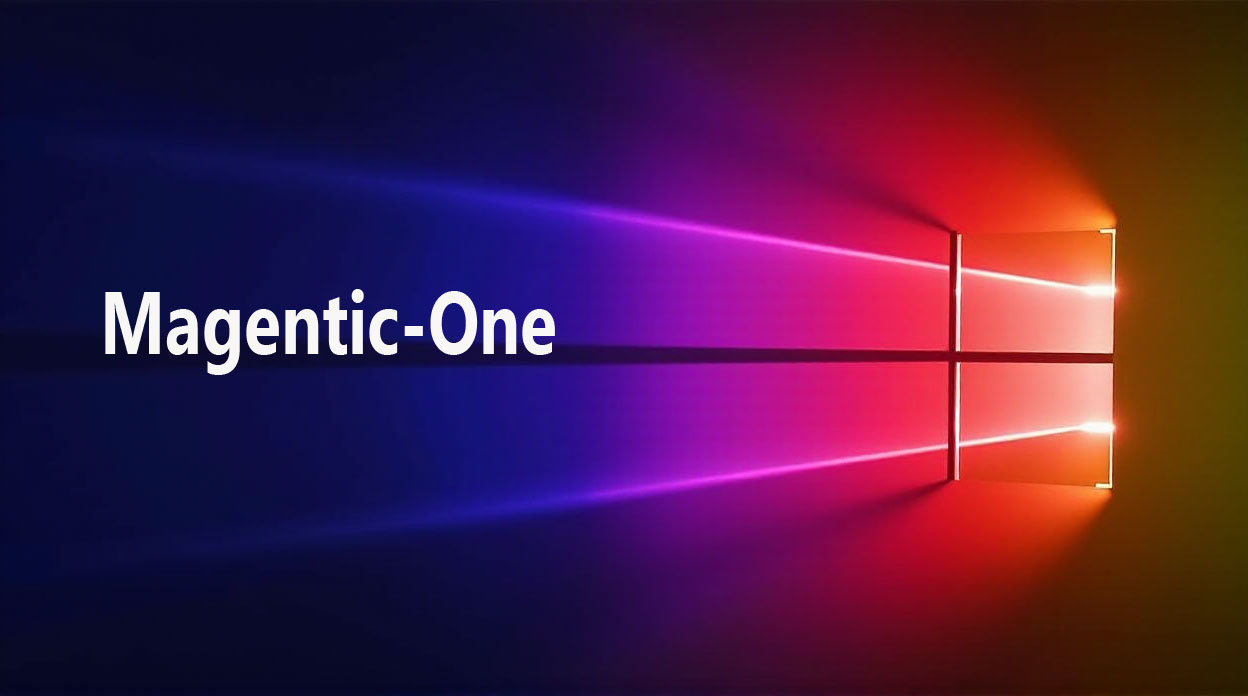
Microsoft has officially joined the AI agent race with the release this week of its Magentic-One system. AI agents take AI one step further than chatbots, by adding action to the mix. AI agents take instructions from a human, then go off and complete the task they’ve been assigned without any further human guidance.
There are various types and strengths of agentic tech currently launching on the market. At one end are simple point-and-click products, like Anthropic’s Computer Use tool, which can take over your web browser and do interesting stuff like search for a hotel and book a taxi.
The other type of AI agent system comes with a host of sophisticated back-end AI reasoning and control, to complete much more complex tasks.
What is Magentic-One?
Magentic-One is designed to provide the kind of clever thinking these more advanced agentic systems employ. Described as a ‘generalist multi-agent system’, the new platform is aimed at the kind of business users Microsoft is familiar with from its long history with office products.
Unusually the company has also released the system as an open-source project on Github, no doubt to encourage the developer community to use the tech to start building interesting applications.
The future of AI is agentic. AI systems are evolving from having conversations to getting things done—this is where we expect much of AI’s value to shine.
Where Magentic-One differs from earlier approaches to AI agents is the fact that the platform is aimed at more generalist workflows. Most agent systems being deployed today are focused on completing a narrow subset of tasks, for example, data analysis or software coding.
Microsoft is claiming that its new system will be able to complete tasks across a wide range of everyday scenarios.
The secret to achieving this comes from the use of what they’re calling the ‘Orchestrator’. This is a lead agent which directs and controls four other agents to solve a task. Rather like a job foreman, the Orchestrator does the project planning and tracking, and adjusts to unforeseen problems or errors to make sure the task stays on course.
The four agents, a WebSurfer, FileSurfer, Coder and ComputerTerminal, collaborate to deliver the actual work that's required while being ‘orchestrated’ by the maestro agent. There's almost a hint of poetry about the process.
It's a very ambitious initiative, at a time when basic AI models struggle to deliver consistent responses even for basic tasks. Much of the hype around AI comes from cleverly constructed demos that highlight one specific usage track.
As many users know, the reality is often very different. For more complex tasks, we’re still largely caught in the 97% trap, where an AI can take us so far, but then needs a lot of human help to complete a given request.
While agents sound like a solution to the problem, they’re still reliant on the quality of the underlying models and have the added burden of increased operational complexity. It also helps to remember that even state-of-the-art agentic systems can only achieve around 50% of the accuracy of a human. So we bipeds are not quite defunct just yet.
Whatever happens in the future, it’s clear that AI agents are here to stay. The flurry of recent announcements from OpenAI, Anthropic and other tech titans, suggest that groups of little AI software packets scurrying around at our bidding will be a core part of 21st-century living.







